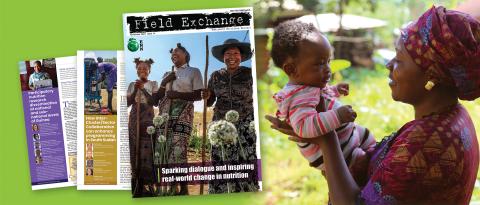Navigating health financing for women, children and adolescents in climate crisis
This is a summary of the following paper: Anton B, Cuevas S, Hanson M et al (2024) Opportunities and challenges for financing women’s, children’s and adolescents’ health in the context of climate change. BMJ Global Health, 9, 4, e014596. https://doi.org/10.1136/bmjgh-2023-014596
Climate change disproportionately affects women, children, and adolescents (WCA), especially in low- and middle-income countries, despite their minimal contribution to global greenhouse gas emissions. Children born in 2020 will experience a twofold to sevenfold increase in extreme weather events compared to those born in the 1960s, highlighting intergenerational injustice. Investing in WCA can address these inequities and yield broad health, economic, social, and environmental benefits. However, WCA health and well-being are still not prioritised in climate policies and financing.
This overview highlights the climate change threats to WCA, especially in vulnerable communities. It explores how health and climate investments can enhance equity, protect WCA health, and support climate goals, emphasising opportunities and challenges in health and climate financing.
Climate change intensifies the health burden on WCA. Natural disasters disproportionately harm young women due to cultural barriers that limit their evacuation options. Climate-sensitive conditions, like infectious diseases and pollution-related respiratory issues, further endanger WCA, especially newborns. Pregnant women face increased risks of adverse birth outcomes from extreme heat. Climate events disrupt maternal, sexual and reproductive health services, and increase violence against women, human trafficking, and child marriage. Adolescents are particularly affected by mental health impacts. Rising healthcare costs due to climate impacts increase out-of-pocket expenses and compromise financial protection and access to necessary care, especially for those in poverty.
Budget constraints and pro-rich fund allocations after disasters further strain healthcare systems. However, opportunities exist to support WCA health, through carbon pricing, climate adaptation funds, and agile public finance management. These mechanisms can provide additional funding, encourage climate-conscious healthcare, and improve resilience in health service delivery amidst climate challenges.
Climate change exacerbates gender inequalities, with women disproportionately affected by associated health and economic hardships. Women often face increased caregiving responsibilities, limited access to assets, and reduced income opportunities. Enhancing access to economic and social resources for women, including sustainable farming practices and formal credit, is crucial. Climate financing mechanisms, such as insurance and dedicated funds, can support women’s resilience, food security, and health in the wake of climate hazards.
Climate change significantly disrupts displacement and migration, with over 216 million people projected to be internally displaced by 2050. Women and children are particularly vulnerable, while host regions often lack adequate resources to support climate migrants. Innovative health financing, social protection programmes, and targeted funds are crucial to support displaced populations, enhance resilience, and prevent forced migration, particularly for women, children, and vulnerable communities.
Anton et al. conclude that greater recognition of the gendered effects of climate change and active promotion of WCA health in climate action are required. They suggest that investments in climate-conscious provider payments and resource allocation are crucial for addressing WCA's vulnerabilities in healthcare. Leveraging the Global Financing Facility for WCA is one option. They also suggest that more research and co-financing strategies are needed to support and build resilience.


